The iliotibial band, also known as the IT Band, plays a vital role in performance in and out of the gym..
We recently had Dr. Jordan Shallow in the office to walk us through his favorite IT band exercise protocol to try and fix common IT band issues. In sports, the gym, and daily life, the IT band plays a vital role in supporting stability at the knees and hips. This is crucial for strength athletes that rely on stable and strong limbs to control heavy loads and produce force accordingly.
In this article, we’re going to go cover some basic anatomy of the IT band, its main functions and purpose, and four exercises for improving IT band issues. If you’re visual learner, then be sure to check out the video below where Dr. Shallow dives more in-depth into the four exercises.
IT Band Anatomy
The IT Band is a multi-purpose tendon that runs down the lateral portion of the leg. This tendon connects the ilium (lateral portion of the hip) to the tibia (lateral shin bone), hence the name IT band.
The IT band also connects the gluteus maximus, gluteus medius, and tensor fascia latae (TFL), serving as a messenger system for these muscles. The gluteus maximus, medius, and TFL all play major roles in our hip’s functionality.
- Gluteus Maximus (yellow): Hip extension and external rotation
- Tensor Fascia Latae (orange): Hip flexion
- Glute Medius (not shown): Hip abduction
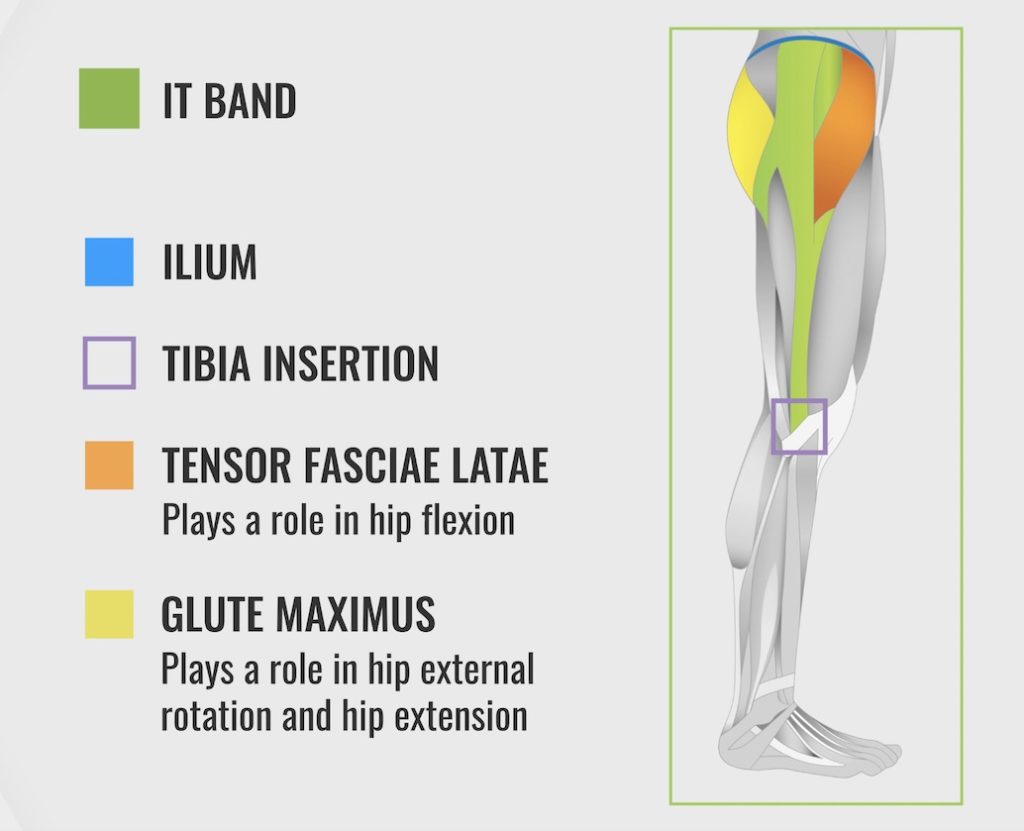
The IT band is incredibly important to keep functioning properly because if it’s tight/reactive, not functioning optimally, or injured, then athletes may experience areas of tightness or discomfort running anywhere from the lateral portion of the knee up to the hip. This discomfort can then lead to instability in various movements and activities, or cause a shift in mechanics due to accommodating for discomfort being felt.
Dr. Shallow points out that the IT band plays an important role in relaying messages between the three muscles above. A proper functioning IT band can also support a healthy gait when walking and running.
IT Band Exercise Protocol
A majority of the exercises below are designed to work the muscles surrounding the IT band. Dr. Shallow mentions that very rarely do IT band issues solely revolve around this tendon, but they’re often a culmination of other problems from surrounding areas.
Modified Pigeon Stretch
The first movement is a modified pigeon stretch. To perform this, sit in a 90/90 degree angle with the legs and bring the sternum square over the front leg. Once you’ve done this, keep the ribcage down and square up the hands, lean into the stretch slowly until you feel a nice pull on the glute maximus and medius.
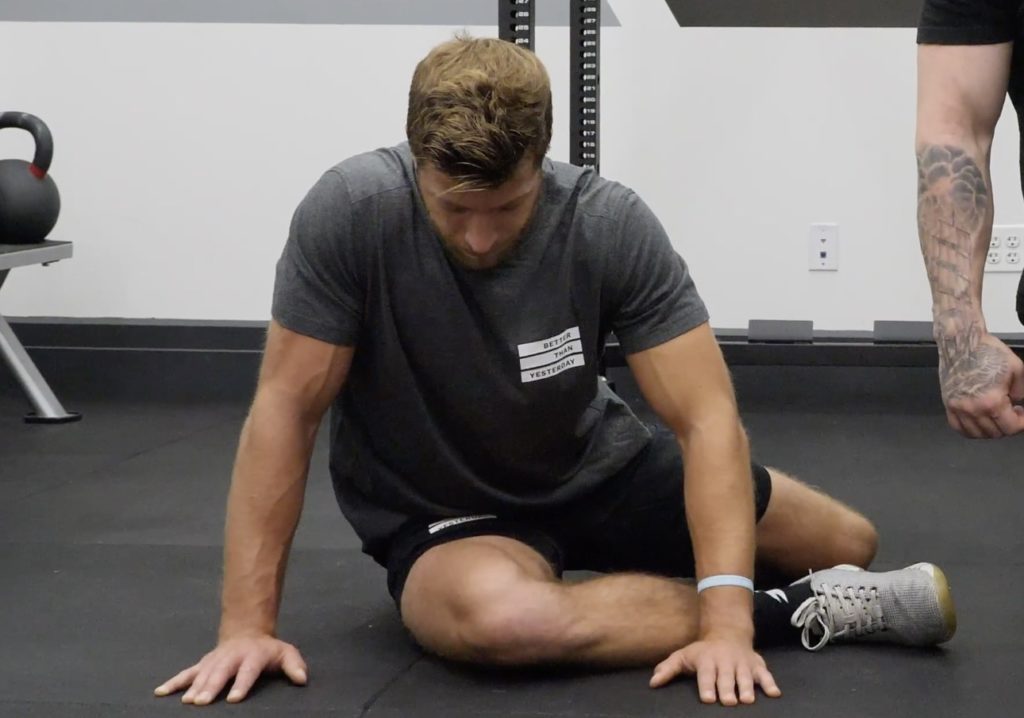
The Prescription
- Base this on time or reps.
- Scale the above on your needs and levels of tightness.
90/90 TFL Stretch
For the next movement, stay in your 90/90 degree leg position, bring your front foot out slightly and grab a light kettlebell. The goal with this movement is to bring the TFL to to the forefront by extending the back hip and internally rotating the leg. Once you’re in this position, you’ll then grab the kettlebell and flip it upside down so the handle is pressing into the TFL.
The TFL sits right below the hip bone and below the greater trochanter. Think about placing the kettlebell handle right around the top of the pocket in-line with the inseam of your pants/shorts. If you have a tight TFL, then you’ll definitely feel this one when you’re on the right spot!
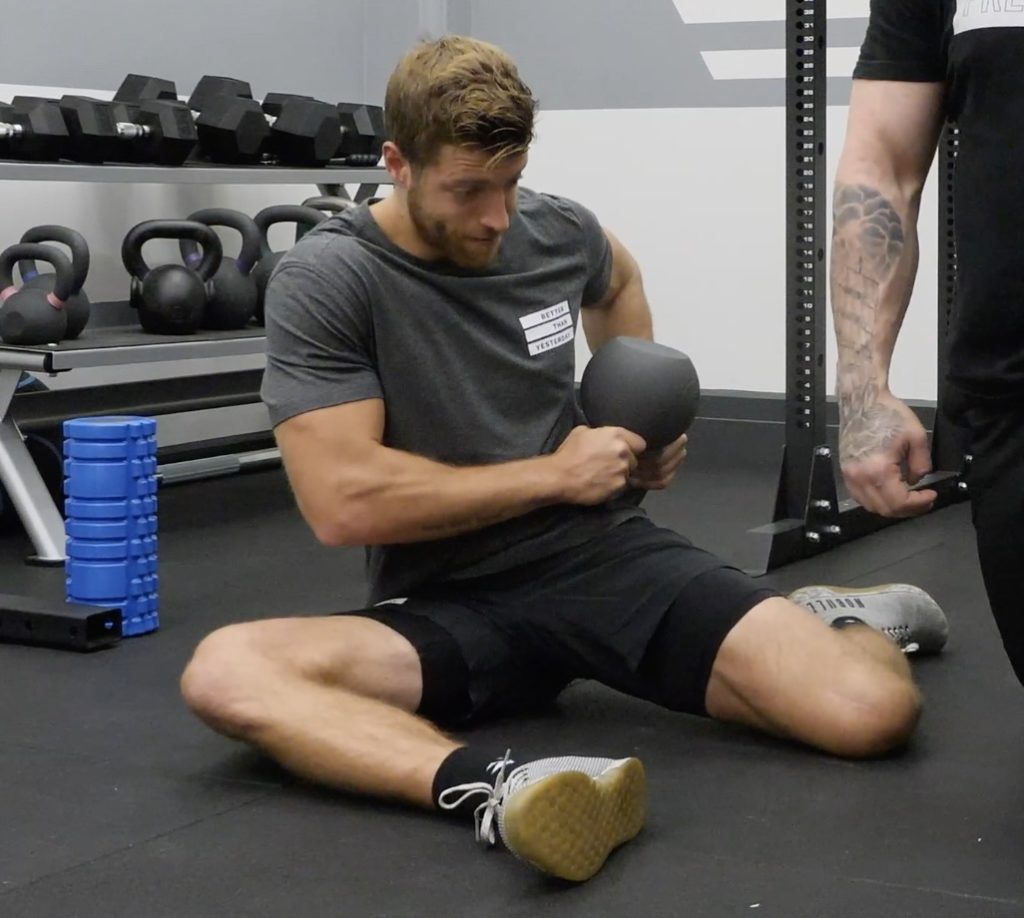
The Prescription
- Hold for a few increments of time.
- Base the time held on your level of tightness.
IT Band Foam Roll Flexion and Extension
Now that we’ve worked on the muscles around the IT band, we’re going to dive into applying some direct contact on the band itself to target deeper musculature that sits below the tendon. For this next movement, you’re going to lie sideways on a foam roller and start a couple inches below the greater trochanter (bony femoral landmark).
Once you’re in this position, you’ll then flex and extend the knee focusing on contracting the quad when reaching full extension. You’ll then work down the leg hitting 2-3 more areas that feel tight or need to receive attention.
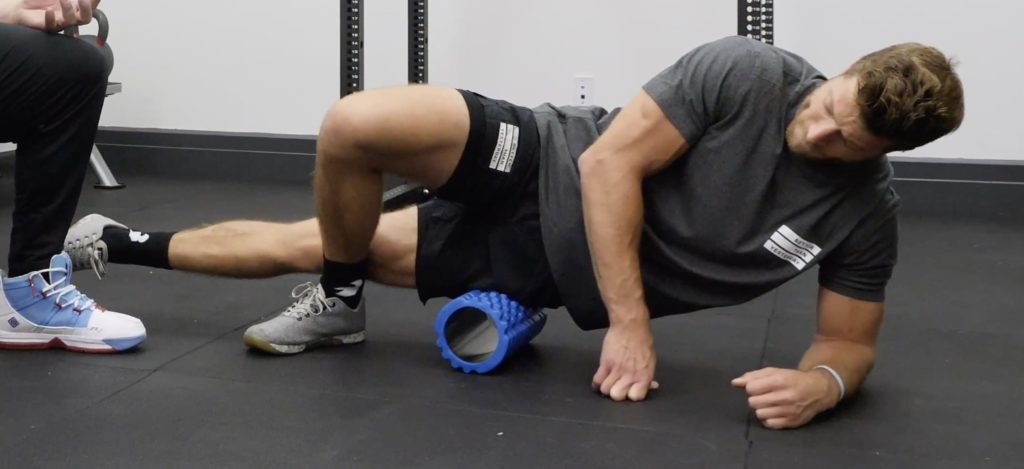
The Prescription
- Target 2-3 spots on the IT band.
- Flex and extend the leg 3-5 times at each spot.
Hip Airplane
The final movement will be the most dynamic in this protocol and works to improve the stability of the gluteus maximus, medius, and TFL. To perform the hip airplane, you’ll plant one foot and move into a single leg Romanian deadlift position. Once you’re here, grip the floor with the foot, make sure the pelvis is square, then begin to open the hip up.
Move slowly through the full range of motion and focus on keeping the back leg elevated, the foot flat on the floor, and the pelvis square.
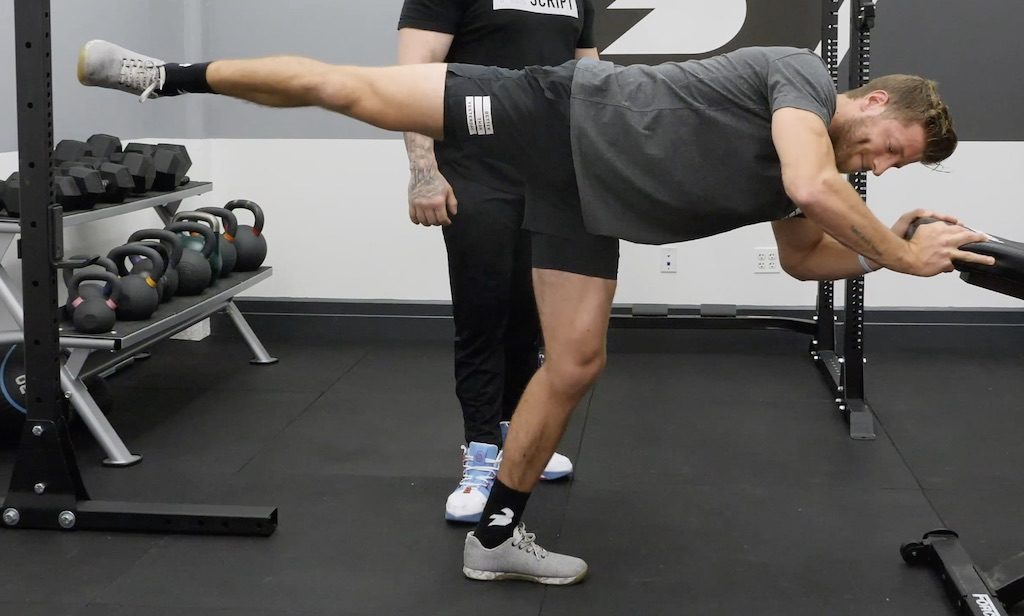
The Prescription
- Perform a few reps, then scale them based on your needs.
- As you train this exercise regularly, try to progress by limiting how many external tools you need to stabilize.
Wrapping Up
IT band issues can be a byproduct of multiple issues. One of the best approaches for tackling IT band problems is to focus on the muscles surrounding this connective tissue, then work to improve their stability.